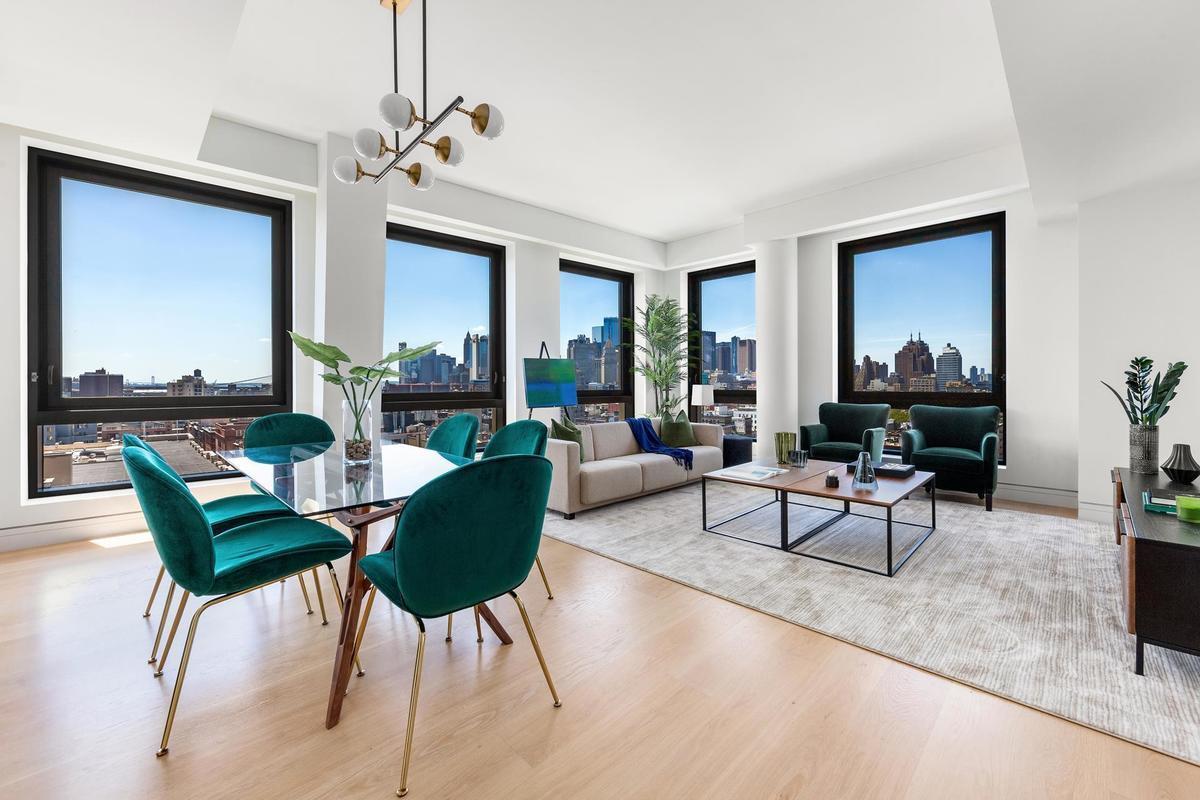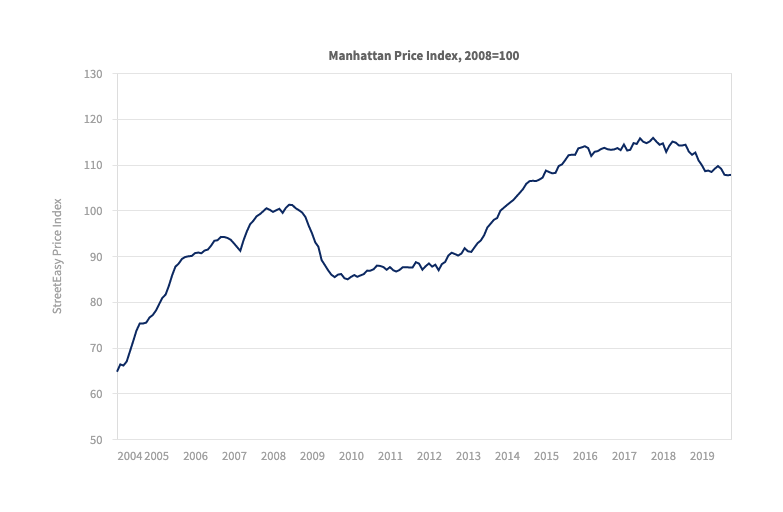
NYC home buyers will have plenty of leverage in 2020. But will they feel like using it? (Getty Images)
In 2019, high-profile buildings like One Manhattan Square and 15 Hudson Yards opened their doors to a sales market that slumped and a rental market that sizzled. The backlog of unsold condos grew to new heights despite interest rates falling sharply from their 2018 peak, as we predicted. Surprise announcements regarding the proposed Amazon HQ2 in Long Island City and the L train upended some of our predictions from last year.
In 2020, we’ll see these trends in the rental and sale markets continuing — though with new twists in what promises to be a memorable time for the city. Here are our predictions for the NYC housing market next year.
A Shaky Economic Picture Will Scare Off Potential Buyers
In 2020, buyers will enjoy enormous negotiating leverage — but many will be reluctant to wield it. Memories of the global financial crisis, combined with worries over a slowing economy and global unrest, will leave many fearful that the market has yet to hit bottom, and that better deals are yet to come.
It’s helpful to remember how the market moved after the financial crisis. The crash created a great buying opportunity in late 2009, but that came well after the Lehman Brothers bankruptcy and accompanying market crash in September 2008. Many who moved aggressively in the early days of the crisis bought well before the bottom of the market, a memory that may linger in the minds of today’s buyers.
If memories of past downturns aren’t scary enough, 2020 promises to be a volatile year in geopolitics, as the U.S. faces a presidential election, and major international issues, like the future of the United Kingdom and the protests in Hong Kong, remain unresolved. Back in 2018, many economists forecast a recession for 2020, and experts still worry that the U.S. economy is long overdue for a downturn. With so much uncertainty, many New Yorkers will find that a buyer’s market still makes for a stressful time to buy, and will wait out the storm by renting.
New Business Districts Will Transform Neighborhoods
Big office moves announced this year by major and minor tech firms could shake up the housing market in 2020, as new areas of the city emerge as commuting destinations.
Though long marred by traffic entering the Holland Tunnel, the Hudson Square neighborhood will see progress toward the construction of new homes for both Disney and Google. Disney plans to base its new Disney+ streaming service out of an all-new campus with 1.3 million square feet of space. With the influx of jobs from prominent employers, nearby residential buildings might finally shake the association with tunnel traffic that has weighed on prices and rents in the past.

Hudson Square and the entrance to the Holland Tunnel. (Getty Images)
Brooklyn areas such as the Brooklyn Navy Yard and Downtown Brooklyn could also become major commuting destinations in 2020, as firms like Amazon, Apple, and Facebook — the latter of which recently signed a lease for 1.5 million square feet in Hudson Yards — push up rents in more central areas. Some of the city’s rising tech firms may choose to join Etsy, Genius, and Kickstarter in adopting a Brooklyn HQ. Ample housing exists in the borough, and it offers a nighttime-and-weekend lifestyle that many may find more appealing than Midtown.
Condo Clearance Sales Will Become the Norm
In 2019 it became apparent that New York City has built too many fancy condos. In 2020, these condos will go on sale, as developers accept the reality of the market and lenders get impatient for their money back. Compounding the issue, another 5,600 new units are set to hit the market, further disrupting the balance between supply and demand. The growing acceptance that the city has too many units demanding top dollar means some of those eye-popping sticker prices will get jaw-dropping price cuts.
How deep will the discounts be? The changes to the New York state “mansion tax” that went into effect in July provided sellers with a strong incentive to strike deals, and may give a preview of what’s to come in 2020. Many units sold for well below their final listing prices: In the second quarter of 2019, 259 homes sold for 15% or more off their final listing price; the median discount for homes over $10 million was 12.5 percent. Across all sales in New York City that were listed on StreetEasy and closed in the second quarter of 2019, buyers negotiated nearly half a billion dollars off of final listing prices. While many sellers prefer to keep listing prices high (to tempt naive buyers into paying them), clearance sales of 15 to 20 percent off are likely to become normal.

A new-development condo in Essex Crossing at 242 Broome St. #14B, listed by Douglas Elliman for $3,995,000.
The Gilded Age of Rentals Will Continue
The overpricing of existing sales inventory and uncertainty over the economy will lead rich New Yorkers to rent instead of buy, making 2020 a banner year for pricey rentals in amenity-rich buildings. Over the past five years, rents in non-amenity buildings throughout the city have risen 3% more than those in buildings with a doorman, gym, and/or pool, as demand for the city’s most affordable homes has remained strongest. Yet over the past year, this trend has reversed, with rents in fancier buildings growing by 3.4 percent, and rents in others by 2.9 percent.
This acceleration of rent growth in fancy buildings reinforces the notion many wealthy locals are continuing to rent. Especially in expensive neighborhoods, the economics of owning are hard to justify. Though we expect rents to continue to rise citywide in 2020, with buyer uncertainty reigning, rents in amenity-rich buildings will continue to grow at a faster pace than others.
Some Neighborhoods Will Be Delayed Due to Train Traffic Ahead
As we showed in our 2019 Rent Affordability Report, New Yorkers tend to trade off commute time for a home that fits their budget. But the subway system’s accumulated maintenance needs have strained many New Yorkers’ ability to get to work on time. In September, the MTA unveiled a $54 billion capital plan designed in part to address these headaches, including signal upgrades and new cars on several lines. Yet if similar past efforts are any indication, better service will be more evident in some areas than others.
More From StreetEasy Research
New Yorkers focus their home searches along subway lines, and the improvement of certain lines over others — as reflected by the volume of complaints New Yorkers hear from their coworkers, family and friends — will influence where they seek homes. Areas that see meaningful subway improvements will likely see increased housing demand, too.
Among potential winners is the Lexington Avenue 4/5/6 line, already one of the smoother-running but more congested lines, which is due for signal upgrades under the new capital plan. Should the 4/5/6 run consistently better than others, expect some home shoppers to take a second look at homes on the Upper East Side and East Harlem over their West Side counterparts, and Eastern Parkway-adjacent sections of Crown Heights over the A/C-serviced sections of Bed-Stuy.
—
Inspired to find your next place in New York? Whether you’re looking to rent or to buy, search NYC apartments on StreetEasy.









